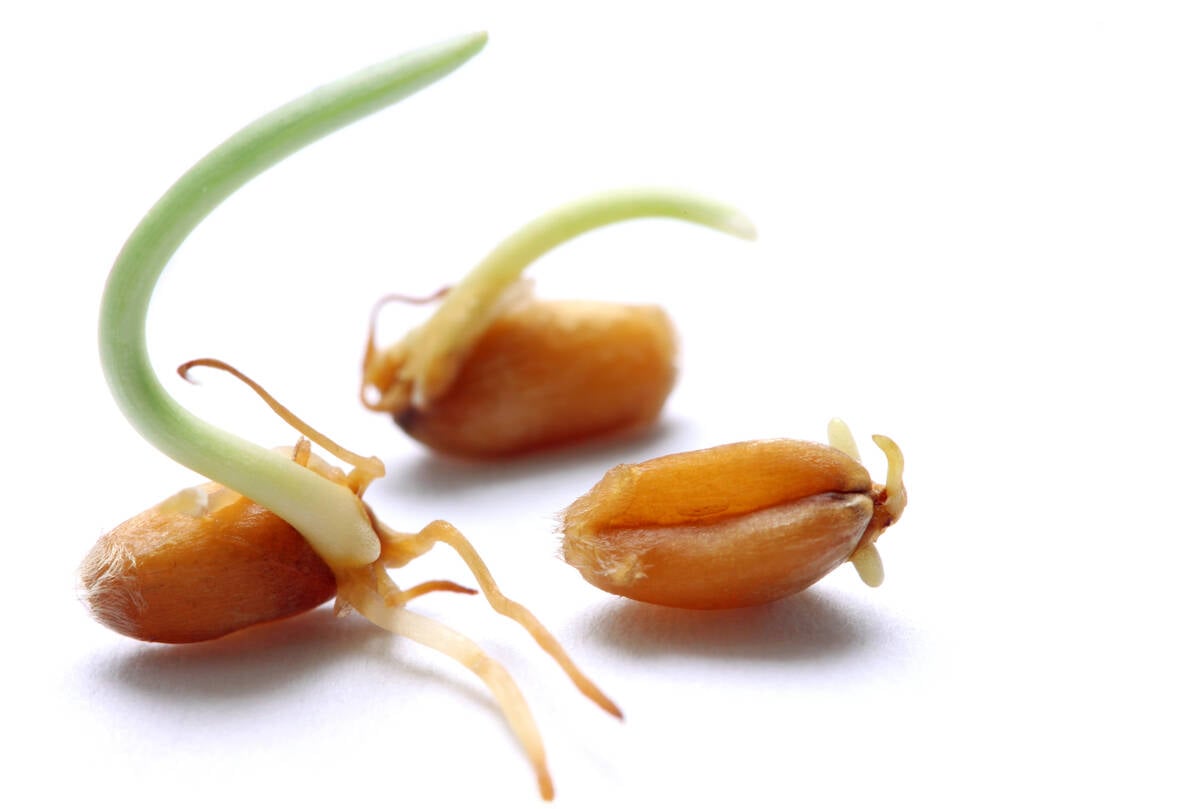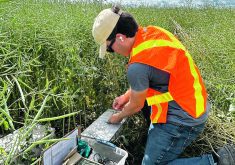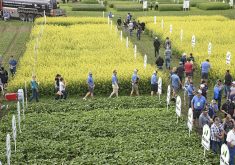Many farmers and industry experts say eight to 10 million acres of corn in Western Canada by 2025 is overly ambitious
Monsanto isn’t backing away from its goal of eight to 10 million acres of corn in Western Canada.
In January, a company representative said it is making excellent progress on the corn expansion project, and 2025 remains the target for millions of acres on the Prairies.
“All of our research that we’ve done, it’s in that eight (million acre) area,” said Dan Wright, corn expansion project lead with Monsanto.
“We feel, through our investment, we’re going to get there…. You don’t want to say (we’re) ahead of schedule, but we feel really good about where we are and what we’ve learned.”
Read Also

Manitoba farmers fight sprouted wheat after rain
Rain in mid-September has led to wheat sprouting problems in some Manitoba farm fields.
Monsanto is convinced it can develop early maturing corn hybrids and figure out the agronomics for Western Canada.
“We wouldn’t have wagered a $100 million if we didn’t think we could (do it),” Wright said.
“Technically, it will happen.”
Many farmers and industry watchers say the acreage prediction and the timeline are overly ambitious. Western Canada grew 300,000 acres of grain corn last year with 250,000 acres in Manitoba.
The ideal geography for expansion is the region around and south of the Trans-Canada highway between Winnipeg and Regina.
Skeptics say many parts of the Prairies are too dry for corn, which needs 500 millimetres of rain to achieve full yield potential. Rainfall of 275 to 375 mm is more typical in southern Saskatchewan.
“There are clearly going to be spots in the West where there just isn’t enough rain,” said Mark Lawton, Monsanto technology development lead, from his office in Guelph, Ont.
“(But) I don’t think that’s the biggest barrier to the (expansion)…. I had that conversation with some (people) in our (plant) breeding group. I think if we’re at 15 inches of rain … that can work.”
Lawton said genetics have improved substantially over the last 15 years. Modern hybrids are more resilient.
“We’ve had situations (growing corn) in Ontario … where a dry year today yields 20, 30 or 40 bushels higher than it would’ve done 10 or 15 years ago.”
Monsanto has spent a large chunk of its investment on corn agronomics. It has tested corn for two years at research sites in Oakville, Man., Brandon, Regina and Carseland, Alta. Company experts are seeking answers for planting dates, plant populations and optimal tillage practices so that they have good information for prospective growers.
Corn may be technically possible in Western Canada, but the crop requires specialized and expensive machinery, including planters, corn headers and grain dryers.
Monsanto has spoken to prairie growers and conducted surveys to assess the cost barrier. It has found that older farmers will not bother, but producers between 30 to 45 are ready and willing.
“What our research says, is if you (have been) farming for less than 20 years … you’re watching corn and you probably believe you will make that capital investment so you can grow corn,” Wright said.
Farmers in southern Saskatchewan have been growing corn for silage and grazing for years, so a shift to grain corn may be feasible. Like most things in agriculture, farmers will make the investment if the yield and price are right.
“Anything happens with the proper financial incentive,” said Brad Eggum, a producer who has grown corn and operates Eggum Seed Sales in Halbrite, Sask., southeast of Weyburn.
“Profit is what drives sustainability…. If corn can prove profitable in the future, it will be adopted (over) a significant area.”
A number of producers around Halbrite re-tooled their operations to grow corn when it traded around $7 per bu. in 2012.
More producers will make the leap the next time corn prices cycle higher, Eggum said.
Corn skeptics have said millions of acres will overburden Western Canada’s grain handling and export system because yields are more than double spring wheat.
Monsanto has heard the objection and met with the railways about the corn expansion plan.
Wright is confident Canada’s grain industry will react positively to a boom in corn acres, much like they responded to the explosion of canola production.
The industry built canola crushing plants to boost domestic use in the 1990s and 2000s, and more corn production should encourage investment in ethanol plants and livestock feeding.
“We’ve spent a tremendous amount of time talking to the livestock industry. Corn is the gold standard for feed, is what we hear consistently,” Wright said.
“When there’s a new crop and an opportunity and the entrepreneurial spirit and financing and ability to make it happen, it happens.”















